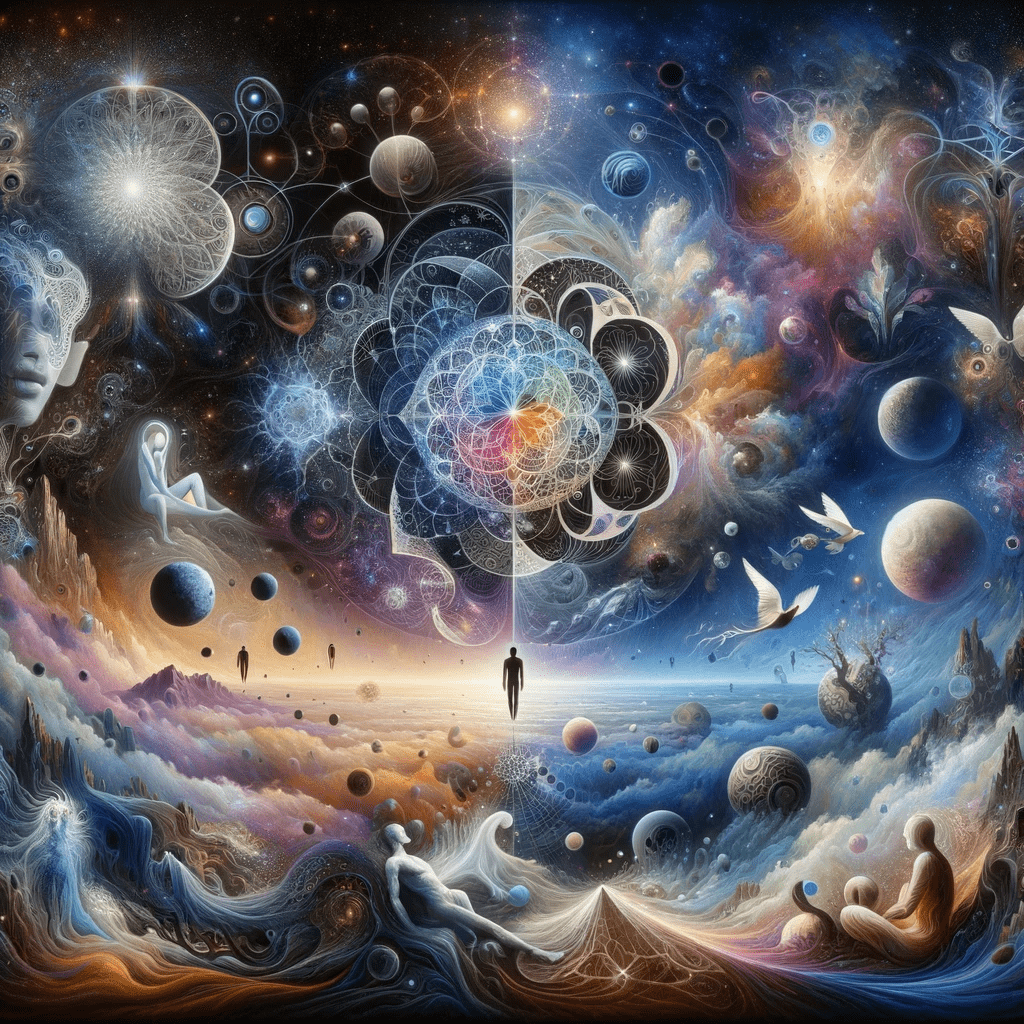Unveiling the Spiritual Dimension: Exploring Theories of Transcendent Realities Beyond Physical Existence

The belief that certain beings may possess a spiritual dimension beyond their physical appearance has been a subject of debate and speculation throughout human history. Various religious, spiritual, and philosophical traditions have different explanations for this phenomenon. Some prominent theories include:
- Dualism: This philosophical perspective posits that reality is divided into two distinct components: the physical/material and the non-physical/spiritual. According to dualism, beings possess both a physical body and an immaterial mind or soul. This idea can be traced back to ancient Greek philosophy, particularly the works of Plato and later, Descartes.
- Panpsychism: This philosophical view suggests that consciousness or mind-like qualities are inherent in all entities, not just humans. According to panpsychism, even inanimate objects and natural phenomena might possess some level of consciousness or spiritual essence.
- Animism: This spiritual belief system, common in many indigenous and pre-modern societies, proposes that all living things, as well as some inanimate objects and natural phenomena, possess a spiritual essence or life force. This spiritual dimension may enable beings to connect with each other, the natural world, and the divine.
- Theosophy: Founded in the late 19th century, theosophy integrates various religious and philosophical traditions, suggesting that all beings have a spiritual essence or divine spark. According to theosophy, spiritual evolution occurs through a series of stages or planes, with the ultimate goal of achieving unity with the divine source.
- New Age spirituality: This diverse and eclectic movement draws on various religious, spiritual, and philosophical traditions. Many New Age beliefs emphasize the existence of a spiritual dimension in all beings, including the idea of a universal life force or energy that connects all living things.
- Near-death experiences (NDEs) and out-of-body experiences (OBEs): Some people who have experienced NDEs or OBEs report encountering spiritual beings or dimensions beyond the physical realm. These experiences have been used as evidence for the existence of a spiritual dimension or afterlife, although the scientific validity of such claims remains a subject of debate.
- Quantum theories of consciousness: Some researchers have proposed that consciousness may be a fundamental aspect of the universe, intrinsically linked to quantum mechanics. This theory suggests that consciousness could exist in a non-local or non-material form, which may provide a framework for understanding spiritual dimensions or experiences.
- Holographic Universe Theory: This concept, based on theoretical physics, proposes that the universe may be a hologram or an illusion, with information encoded on a two-dimensional surface. According to this theory, the apparent three-dimensional nature of our reality could be an emergent property of underlying non-local quantum processes. This perspective may help explain the existence of spiritual dimensions or phenomena that transcend our perceived physical reality.
- Biocentrism: Developed by Robert Lanza, biocentrism posits that life and consciousness create the universe, rather than the other way around. This theory suggests that our understanding of the universe is shaped by our consciousness, and that a deeper spiritual reality might exist beyond our current scientific framework.
- Integral Theory: Developed by philosopher Ken Wilber, Integral Theory combines insights from various disciplines, including science, spirituality, and psychology, to provide a holistic understanding of reality. It proposes that all aspects of existence, including the physical and spiritual, are interconnected and essential for a complete understanding of the universe.
- Morphic Resonance: Biologist Rupert Sheldrake’s concept of morphic resonance proposes that there is a collective memory or field of information that connects all living beings across space and time. This theory suggests that a non-physical or spiritual dimension may underlie the apparent patterns and structures observed in the natural world.
- Process Philosophy: Developed by philosophers like Alfred North Whitehead and Charles Hartshorne, process philosophy emphasizes the dynamic, interconnected, and evolving nature of the universe. According to this perspective, reality is composed of processes and events rather than static objects, with consciousness and spirituality being integral aspects of these processes.
While these theories provide various perspectives on the existence of a spiritual dimension, it is important to remember that they are speculative and may not be universally accepted. The nature of consciousness and the potential for a spiritual dimension remain open questions in both science and philosophy.

